- Why Choose Vertical Cucumber Growing?
- Maximum Yield: The Benefits of Vertical Cucumber Growing
- 1. Space Efficiency
- 2. Increased Air Circulation
- 3. Better Sunlight Exposure
- 4. Easier Harvesting
- 5. Disease Prevention
- 6. Longer Growing Season
- Space Efficiency: How Vertical Cucumber Growing Saves Space
- Getting Started with Vertical Cucumber Growing
- Benefits of Vertical Cucumber Growing
- Getting Started
- Choosing the Right Vertical Structure
- Trellis Systems
- Cage Systems
- A-Frame Structures
- Garden Walls
- Choosing the Right Structure for Your Needs
- Planting and Caring for Vertical Cucumbers
- 1. Choose the Right Variety
- 2. Provide Adequate Support
- 3. Prepare the Soil
- 4. Plant the Cucumbers
- 5. Water Regularly
- 6. Mulch
- 7. Stake or Train the Vines
- 8. Monitor for Pests and Diseases
- 9. Harvest Frequently
- Tips and Tricks for Successful Vertical Cucumber Growing
- “Question-Answer”
- What is vertical cucumber growing?
- What are the benefits of vertical cucumber growing?
- Is vertical cucumber growing suitable for small gardens?
- What types of trellises or support systems can be used for vertical cucumber growing?
- Can I grow cucumbers vertically in pots or containers?
- Are there any specific pruning techniques for vertical cucumber growing?
- What are some popular cucumber varieties for vertical growing?
- “Video” Secrets of Growing Cucumbers With Many Fruits, From A To Z, Harvest After Only 1 Month
Growing cucumbers vertically is an innovative and efficient way to maximize both the yield and space in your garden. This method involves training the cucumbers to grow up a trellis or support system, instead of letting them sprawl on the ground. Not only does vertical growing allow for better air circulation and sunlight exposure, but it also results in healthier plants and a higher crop yield.
Vertical cucumber growing offers several advantages over traditional horizontal methods. First and foremost, it saves valuable garden space. By growing cucumbers vertically, you can utilize the vertical space in your garden, allowing you to grow more plants in a smaller area. This is particularly beneficial if you have a limited garden space or want to make the most of your available area.
In addition to space efficiency, vertical growing also promotes better plant health. When cucumbers are grown on the ground, they are more susceptible to diseases and pests. Moisture can accumulate around the leaves, leading to fungal infections, while pests like slugs and snails can easily access the plants. By training the cucumbers to grow vertically, you can minimize these risks, as well as improve air circulation and reduce the likelihood of rot and mildew.
Furthermore, vertical growing allows for easier harvesting and maintenance. When cucumbers are grown horizontally, it can be challenging to find and pick the fruits, as they tend to blend in with the foliage. However, when grown vertically, the cucumbers are more visible and accessible, making harvesting a breeze. Additionally, pruning and pest control become more manageable, as you can easily reach and inspect the plants.
In conclusion, vertical cucumber growing is a practical and effective technique that offers numerous benefits, including maximum yield and space efficiency. By training your cucumbers to grow vertically, you can save space, promote better plant health, and enjoy easier harvesting and maintenance. Whether you have a small urban garden or a large plot of land, vertical growing is a fantastic option to consider for growing cucumbers and maximizing your garden’s potential.
Why Choose Vertical Cucumber Growing?
Growing cucumbers vertically offers several advantages compared to traditional horizontal methods. Here are some of the reasons why choosing vertical cucumber growing can be beneficial:
- Maximize Yield: Vertical cucumber growing allows you to make the most out of your garden space by utilizing vertical space effectively. Instead of spreading out horizontally, cucumber plants can be trained to grow vertically on trellises or fences. This vertical growth maximizes the available sunlight and airflow, resulting in increased yields.
- Save Space: Using vertical growing methods for cucumbers helps save valuable gardening space. When cucumbers are grown vertically, they take up less ground space compared to sprawling horizontally. This is especially advantageous for gardeners with limited space, such as small backyard gardens or urban balconies.
- Reduce Disease and Pest Problems: When cucumbers are grown vertically, it provides better air circulation around the plants. Improved airflow helps reduce the risk of fungal diseases, such as powdery mildew, as well as pest problems like cucumber beetles. Well-ventilated plants also dry faster after rain or irrigation, preventing water-related diseases.
- Easier Harvesting: With vertical cucumber growing, the fruits are more accessible and easier to harvest. Instead of searching through sprawling vines and foliage, the cucumbers can be reached at a convenient height. This makes picking cucumbers quicker and more efficient, saving time and effort.
- Improved Fruit Quality: Growing cucumbers vertically can result in better fruit quality. With optimal sunlight exposure, the cucumbers receive consistent and even ripening, resulting in more desirable flavor and texture. Additionally, growing cucumbers vertically helps prevent deformities and shape irregularities that can occur when they are grown horizontally.
Choosing vertical cucumber growing not only offers practical benefits such as maximizing yield and saving space but also contributes to healthier plants and better-quality cucumbers. Whether you have a small garden or simply want to optimize your cucumber harvest, vertical growing methods are worth considering.
Maximum Yield: The Benefits of Vertical Cucumber Growing
Growing cucumbers vertically is a technique that offers several benefits, including maximum yield. By utilizing vertical space effectively, you can increase your cucumber production and make the most of limited gardening space.
1. Space Efficiency
Vertical cucumber growing allows you to maximize your gardening space. Instead of spreading horizontally on the ground, cucumbers grow vertically, utilizing trellises, cages, or stakes. This method is especially beneficial for those with small garden plots or limited balcony space.
2. Increased Air Circulation
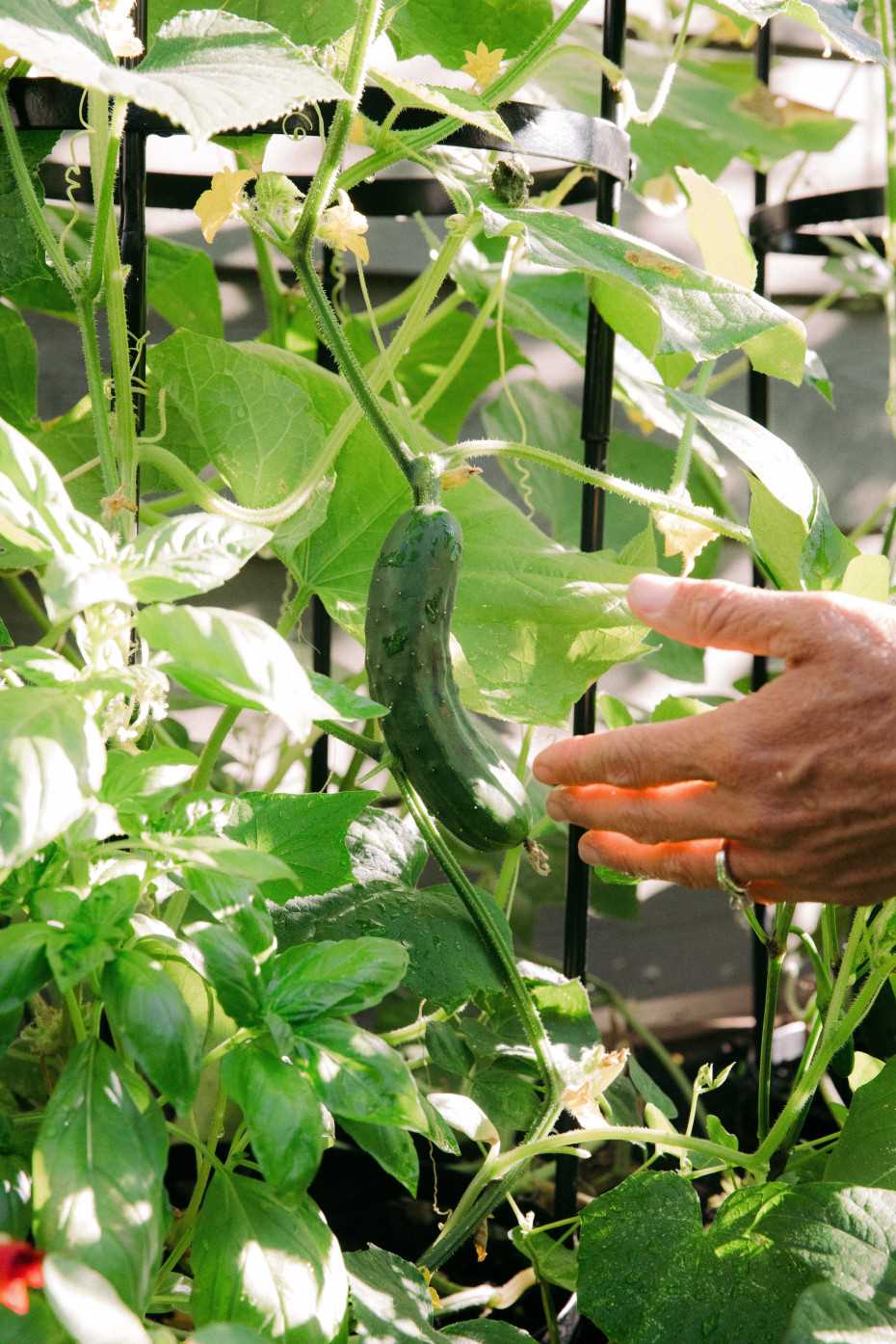
When cucumbers are grown vertically, there is more air circulation around the plants. This helps prevent the spread of diseases and pests, as well as improve pollination. Adequate air circulation also reduces the risk of fungal infections, such as powdery mildew, that can affect cucumber plants.
3. Better Sunlight Exposure
Vertical cucumber growing ensures that each plant receives maximum sunlight exposure. By training the vines to grow vertically, you can position the plants to receive direct sunlight throughout the day. This helps in photosynthesis, leading to healthier and more productive cucumber plants.
4. Easier Harvesting

When cucumbers are grown vertically, they are easier to harvest. The fruits hang down, making them more visible and accessible. This eliminates the need to search through sprawling vines on the ground, reducing the risk of accidentally damaging other plants or the cucumbers themselves during harvesting.
5. Disease Prevention
Vertical cucumber growing can prevent certain diseases that affect plants grown horizontally. By keeping the foliage and fruits off the ground, you reduce the risk of soil-borne diseases and pests. This promotes healthier plants and reduces the need for chemical treatments.
6. Longer Growing Season
Growing cucumbers vertically can extend the growing season. By providing proper support, you can start growing cucumbers earlier in the spring and continue harvesting them later into the fall. This allows you to enjoy fresh cucumbers for a longer period.
In conclusion, vertical cucumber growing offers maximum yield by utilizing space efficiently and providing benefits such as increased air circulation, better sunlight exposure, easier harvesting, disease prevention, and a longer growing season. By implementing this technique, you can enjoy a bountiful cucumber harvest while making the most of your gardening space.
Space Efficiency: How Vertical Cucumber Growing Saves Space
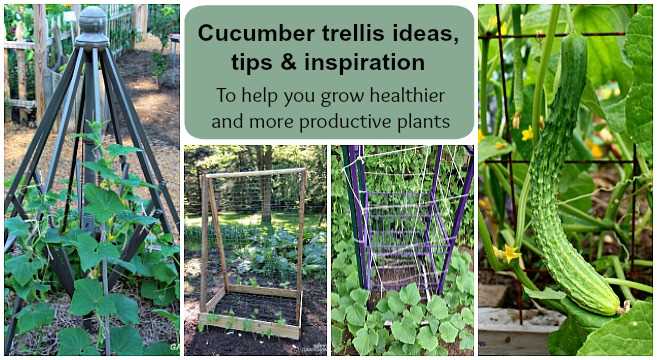
One of the main advantages of vertical cucumber growing is its space efficiency. By utilizing vertical space, gardeners can maximize their cucumber yield while saving valuable ground space. In traditional gardening methods, cucumbers spread out horizontally, taking up a significant amount of ground space. This limits the number of plants that can be grown in a given area.
With vertical cucumber growing, cucumber vines are trained to grow vertically by using trellises, stakes, or cages. This allows gardeners to utilize the vertical space in their garden, making the most of their available area. By growing cucumbers vertically, gardeners can stack multiple plants in a single row, multiplying their crop yield without taking up additional ground space.
Vertical cucumber growing also helps to optimize sunlight exposure for the plants. By positioning the cucumber vines vertically, each plant receives more direct sunlight, leading to better photosynthesis and healthier growth. This is particularly beneficial for gardens with limited sun exposure or crowded areas where plants may shade each other.
In addition to maximizing crop yield, vertical cucumber growing can also improve air circulation around the plants. When cucumber vines are grown horizontally, leaves can overlap and create a dense canopy, preventing good air circulation. This can lead to increased humidity, which can increase the risk of fungal diseases. By training the vines vertically, air can circulate more freely between the plants, reducing the risk of fungal infections and promoting healthier plant growth.
Vertical cucumber growing is an excellent solution for urban gardeners or those with limited space. It offers a space-efficient and productive way to grow cucumbers, making the most of available areas and maximizing crop yield. So, whether you have a small balcony or a backyard garden, consider implementing vertical cucumber growing to enjoy all the benefits it has to offer.
Getting Started with Vertical Cucumber Growing
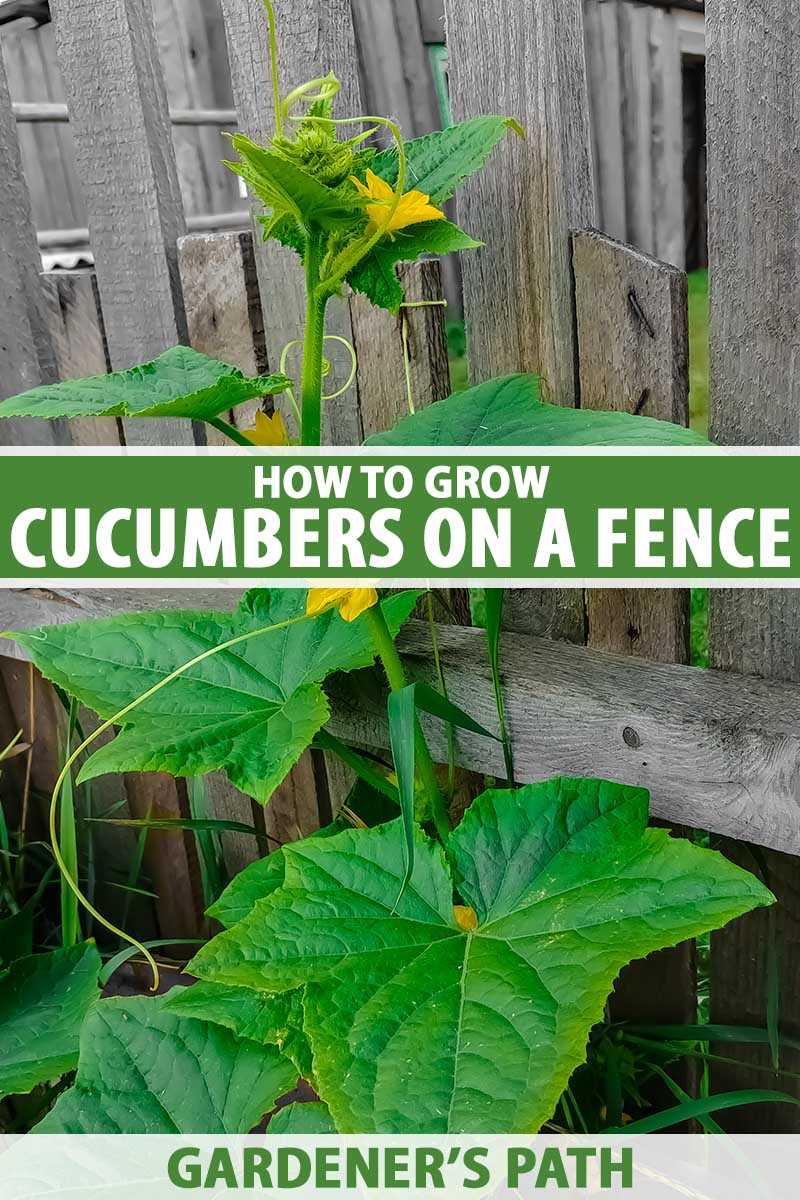
If you are interested in maximizing your cucumber yield and space efficiency, vertical cucumber growing is a great option to consider. This method involves training cucumber vines to grow upwards rather than sprawling along the ground. Not only does vertical growing save space in your garden, but it also provides numerous benefits for your plants.
Benefits of Vertical Cucumber Growing
- Increased yield: Vertical cucumber growing allows you to grow more cucumbers in the same amount of space. By training the vines to grow vertically, you can take advantage of the vertical space in your garden or use trellises or stakes to support the plants. This enables you to maximize your cucumber production and enjoy a greater yield.
- Better air circulation: When cucumber vines are grown vertically, they are more exposed to air circulation. This helps to prevent diseases, such as powdery mildew, which can thrive in humid and crowded conditions. Improved air circulation also reduces the likelihood of pests and makes it easier for bees and other pollinators to access the flowers, resulting in better fruit set.
- Easier harvesting: With vertical cucumber growing, the cucumbers hang down and are easy to spot and harvest. This eliminates the need to search through sprawling vines or accidentally step on delicate fruits. Harvesting cucumbers becomes a more enjoyable and efficient task.
- Space efficiency: Vertical cucumber growing saves valuable space in your garden. By using vertical structures, such as trellises, stakes, or cages, you can train the vines to grow upwards instead of spreading out horizontally. This is especially beneficial for gardeners with limited space or those looking to maximize their garden’s potential.
Getting Started
To get started with vertical cucumber growing, follow these steps:
- Choose the right cucumber variety: Not all cucumber varieties are suitable for vertical growing. Look for varieties that are known for their vine length and climbing ability. Some popular varieties for vertical growing include ‘Long English’ cucumbers and ‘Homemade Pickles’.
- Prepare the support structure: Decide on the type of support structure you will use to train the cucumber vines. This can include trellises, stakes, or cages. Set up the support structure before planting the cucumber seeds or seedlings.
- Plant the cucumber seeds or seedlings: Sow the cucumber seeds or transplant the seedlings according to the instructions on the seed packet or plant tag. Make sure to provide adequate spacing between plants to allow for vertical growth.
- Train the cucumber vines: As the cucumber plants grow, gently guide the vines upwards towards the support structure. Use soft ties or plant clips to secure the vines to the trellis or stakes. This will help the plants to grow vertically and prevent them from sprawling on the ground.
- Provide regular care: Like any plants, cucumbers grown vertically require regular care. This includes watering, fertilizing, and monitoring for pests or diseases. Make sure to provide support for heavy fruits by using slings or netting.
- Harvest and enjoy: Once the cucumbers are ripe, harvest them by gently twisting them off the vine. Enjoy the delicious taste and rewards of your vertical cucumber growing efforts!
Choosing the Right Vertical Structure

When it comes to vertical cucumber growing, choosing the right structure is essential for maximizing yield and space efficiency. There are several options available, each with its own advantages and disadvantages. Here are some popular choices:
Trellis Systems
Trellis systems are one of the most common and versatile options for vertical cucumber growing. A trellis consists of a series of vertical posts connected by horizontal wires or strings, creating a grid-like structure that cucumbers can climb on. Trellis systems offer easy access to the cucumbers for harvesting and maintenance, and they allow air circulation and sunlight penetration, promoting healthy plant growth.
Cage Systems
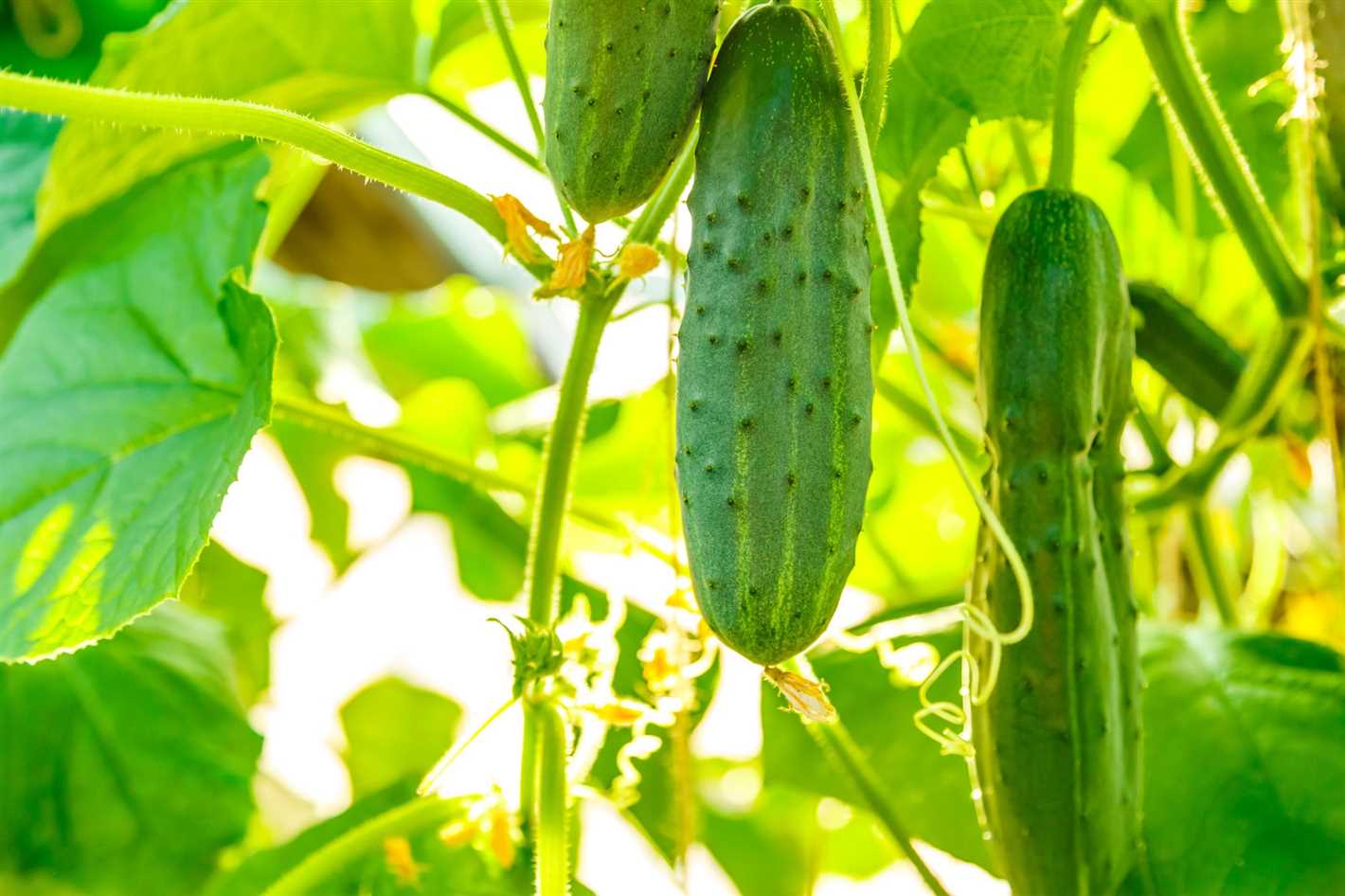
Cage systems are another popular choice for vertical cucumber growing. Cages are typically made of metal or plastic and provide a sturdy support structure for the cucumbers. They are easy to assemble and can be reused for multiple growing seasons. Cages help prevent the cucumbers from sprawling on the ground, reducing the risk of disease and pests.
A-Frame Structures
A-frame structures are a space-efficient option for vertical cucumber growing. They consist of two inclined sides connected at the top, forming a shape similar to the letter “A”. Cucumbers can be trained to grow up the inclined sides of the structure, utilizing vertical space effectively. A-frame structures are relatively simple to build and provide good air circulation for the plants.
Garden Walls
Garden walls are a unique and aesthetically pleasing option for vertical cucumber growing. They involve building a wall with built-in shelves or pockets where cucumbers can be grown vertically. Garden walls can be made of various materials, such as wood, metal, or even repurposed items like pallets. They are ideal for small spaces or urban gardens where vertical space is limited.
Choosing the Right Structure for Your Needs
When choosing a vertical structure for cucumber growing, consider factors such as the available space, budget, and your specific goals and preferences. Consider the height and width of the structure, as well as its durability and ease of maintenance. Additionally, think about the aesthetic appeal of the structure and how it will fit into your overall garden design.
Remember to provide adequate support for the cucumbers as they grow, and regularly monitor the plants for any signs of stress or disease. With the right vertical structure in place, you can enjoy the benefits of maximum yield and space efficiency in your cucumber garden.
Planting and Caring for Vertical Cucumbers
Cucumbers are one of the most popular vegetables to grow in a vertical garden. With proper planting and care, you can enjoy a maximum yield and make the most efficient use of your space. Here are some tips to help you successfully plant and care for your vertical cucumbers.
1. Choose the Right Variety
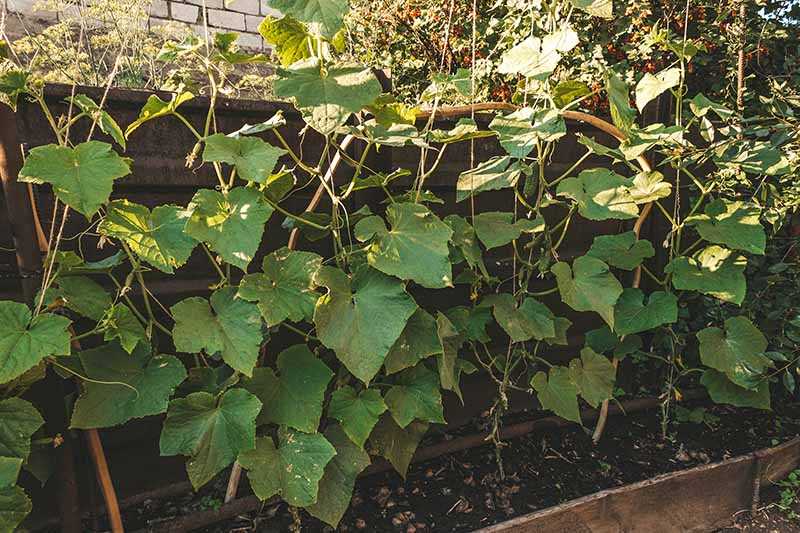
When selecting cucumber varieties for vertical growing, choose compact or bush varieties that have a vining habit. These varieties will grow well in tight spaces and will not require as much room to spread out as traditional cucumber varieties.
2. Provide Adequate Support
Cucumbers need a sturdy support structure to climb on. This can be a trellis, a fence, or a simple vertical frame made from bamboo or other materials. Make sure the support is tall enough to accommodate the growth of the cucumbers and strong enough to withstand the weight of the vines and fruits.
3. Prepare the Soil
Before planting your cucumbers, prepare the soil by adding compost or well-rotted manure to improve its fertility and drainage. Cucumbers prefer loose, well-draining soil with a pH level of around 6.0 to 7.0.
4. Plant the Cucumbers
Plant your cucumbers in well-spaced rows, or if using a trellis or vertical frame, plant them at the base of the support structure. Dig a hole that is big enough to accommodate the cucumber seedling’s root ball and place the seedling in the hole. Firmly press the soil around the base of the plant to ensure it is secure.
5. Water Regularly
Keep the soil evenly moist throughout the growing season. Cucumbers need at least 1 inch of water per week, and more during hot, dry periods. Water the base of the plants, avoiding the leaves to reduce the risk of fungal diseases.
6. Mulch
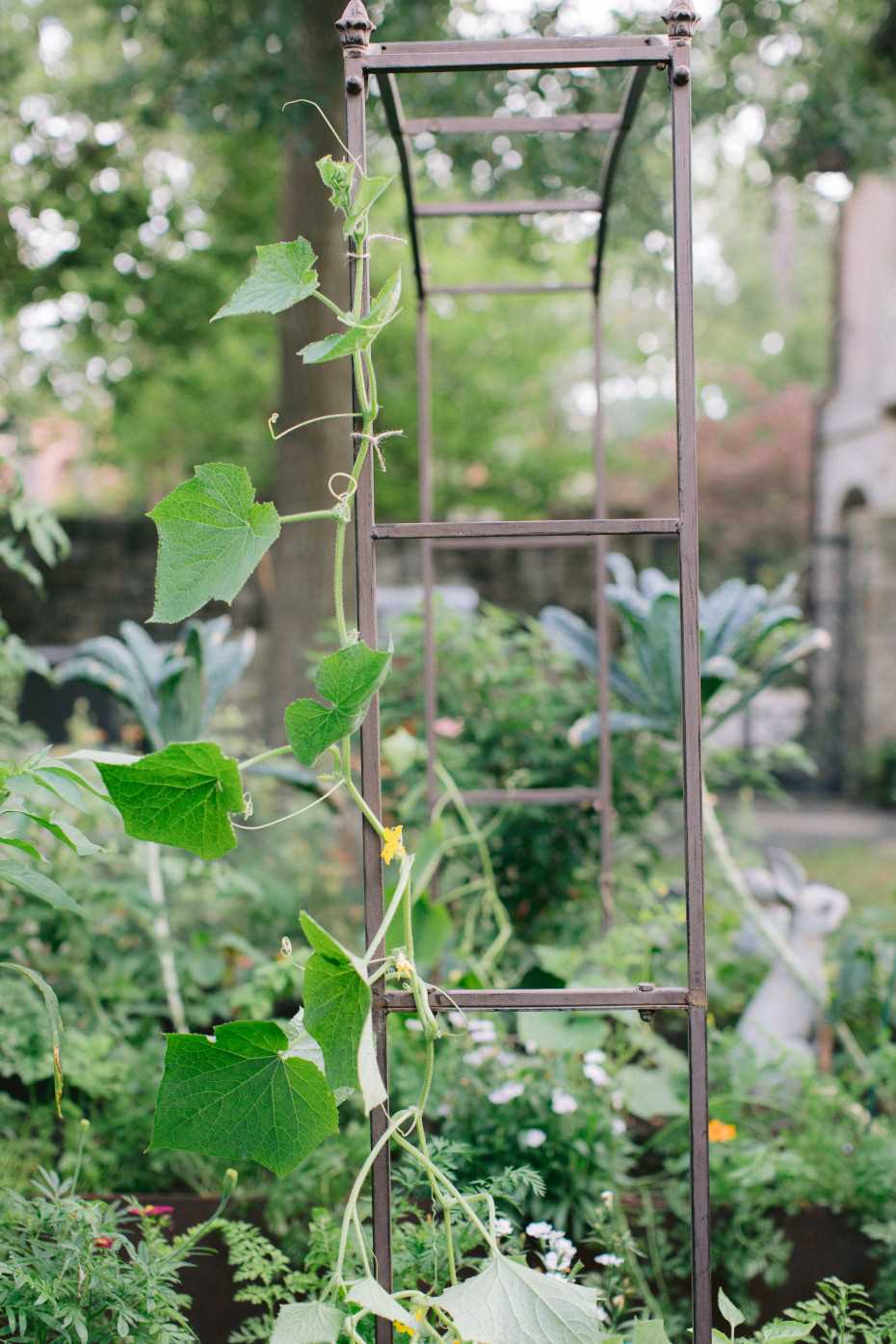
Apply a layer of organic mulch, such as straw or wood chips, around the base of the plants. Mulching helps to retain moisture in the soil, suppresses weed growth, and keeps the fruit clean by preventing it from coming into contact with the soil.
7. Stake or Train the Vines
If your cucumbers are not naturally self-supporting, you may need to stake or train the vines onto the vertical structure. This can be done by gently tying the vines to the support using soft twine or plant ties. Regularly check the vines and adjust the ties as necessary to prevent them from becoming constricted or damaged.
8. Monitor for Pests and Diseases
Regularly inspect your cucumber plants for signs of pests, such as aphids or cucumber beetles, and diseases, such as powdery mildew or bacterial wilt. If you notice any issues, take appropriate measures to control or prevent further damage.
9. Harvest Frequently
Harvest your cucumbers promptly to encourage continued fruit production. Cucumbers are best when picked young and tender. Regularly check the vines for ripe cucumbers, and gently twist or cut them from the vine to harvest.
By following these planting and care tips, you can enjoy a successful vertical cucumber growing experience and maximize your yield in even the smallest of spaces!
Tips and Tricks for Successful Vertical Cucumber Growing
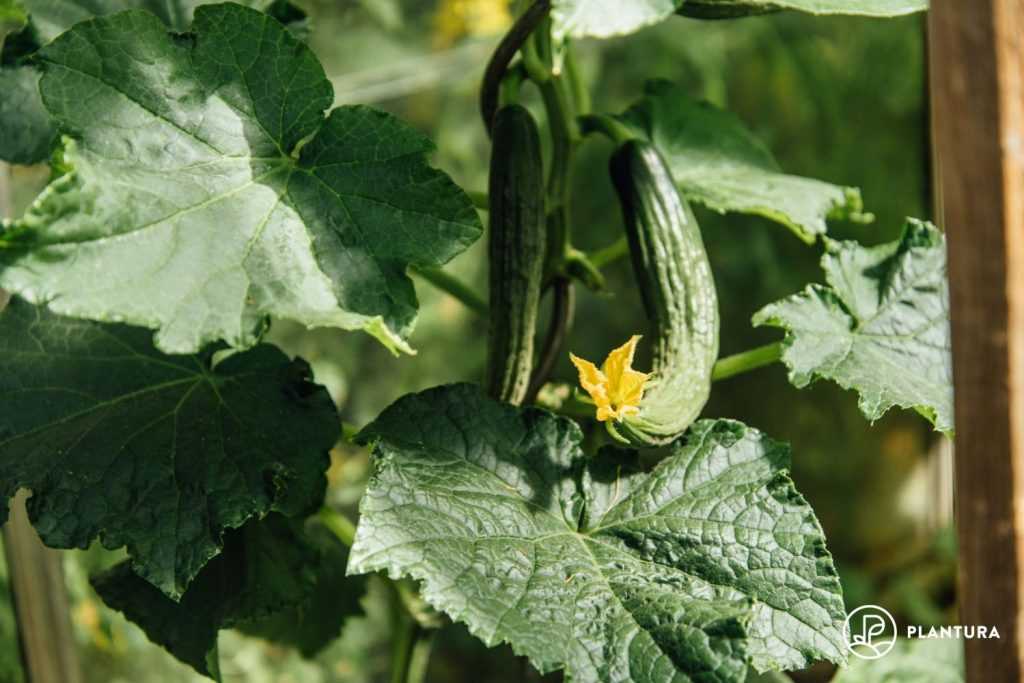
- Choose the right cucumber variety: Not all cucumber varieties are suitable for vertical growing. Look for compact or bushy varieties that have been specifically bred for vertical gardening.
- Provide adequate support: Cucumbers need support to grow vertically. Install a trellis or a sturdy structure for the plants to climb on. Make sure it is tall enough to accommodate the full height of the cucumber vines.
- Plant cucumbers close together: Vertical gardening requires plants to be grown closer together than in traditional gardening. Plant cucumbers about 12 to 18 inches apart to maximize space efficiency.
- Prune the plants: Regularly prune the cucumber plants to remove any side shoots or suckers that may divert energy from the main vine. This will encourage the plants to put more energy into producing cucumbers.
- Provide proper watering: Cucumbers need regular and consistent watering to thrive. Make sure the soil is moist but not waterlogged. Consider using drip irrigation or a soaker hose to provide a steady water supply to the plants.
- Fertilize regularly: Cucumbers are heavy feeders and require regular fertilization. Use a balanced fertilizer and apply it according to the manufacturer’s instructions. Avoid over-fertilizing, as this can lead to excessive foliage growth at the expense of fruit production.
- Monitor pests and diseases: Cucumbers are susceptible to various pests and diseases, such as cucumber beetles, aphids, and powdery mildew. Regularly inspect the plants for signs of infestation or disease and take appropriate action, such as applying organic pest control methods or using disease-resistant varieties.
- Harvest regularly: Harvest cucumbers when they are fully ripe to encourage the plants to continue producing more fruit. Regular harvesting also prevents the cucumbers from becoming overripe and losing their crispness.
By following these tips and tricks, you can enjoy a successful vertical cucumber garden that maximizes yield and space efficiency.
“Question-Answer”
What is vertical cucumber growing?
Vertical cucumber growing is a method of growing cucumbers where the plants are trained to grow vertically on trellises or support systems instead of sprawling on the ground.
What are the benefits of vertical cucumber growing?
There are several benefits of vertical cucumber growing. Firstly, it maximizes yield because the plants are grown in a compact vertical space, allowing for more plants to be grown per square meter. Secondly, it saves space since the plants are trained to grow vertically, freeing up valuable ground space. Lastly, vertical cucumber growing helps to improve air circulation around the plants, which can reduce the risk of disease and increase overall plant health.
Is vertical cucumber growing suitable for small gardens?
Yes, vertical cucumber growing is ideal for small gardens. Since the plants are grown vertically, it allows for more efficient use of limited space. By training the plants to grow on a trellis or support system, you can grow cucumbers even in small areas, such as balconies or patios.
What types of trellises or support systems can be used for vertical cucumber growing?
There are several options for trellises or support systems for vertical cucumber growing. You can use simple stakes or bamboo poles to support the plants and encourage them to grow vertically. Alternatively, you can use trellis netting, which provides a sturdy support for the plants and allows them to climb and grow vertically.
Can I grow cucumbers vertically in pots or containers?
Yes, you can grow cucumbers vertically in pots or containers. Choose a large container with good drainage and provide a trellis or support system for the plants to climb on. Make sure to use a rich, well-draining soil and provide regular water and nutrients for optimal growth.
Are there any specific pruning techniques for vertical cucumber growing?
Yes, pruning is an important part of vertical cucumber growing. It helps to control the growth and shape of the plants, as well as improve air circulation. Prune off any lateral shoots or side branches that develop along the main stem. Also, remove any yellow or diseased leaves to promote good plant health.
What are some popular cucumber varieties for vertical growing?
There are many cucumber varieties that are suitable for vertical growing. Some popular choices include ‘Burpless’, ‘Marketmore’, ‘Lemon’, and ‘Suyo Long’. These varieties have been bred specifically for vertical growing and are known for their compact growth and high yield.







